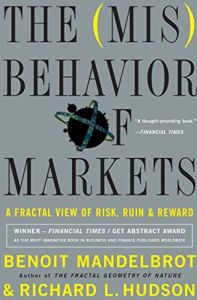
The (Mis)behavior of Markets
A Fractal View of Risk, Ruin, and Reward
Recommendation
Finance is a difficult and recondite subject, perhaps second only to mathematics in its inability to inspire excitement in most readers. Yet Benoit Mandelbrot and Richard L. Hudson, co-authors of this book, manage to turn financial math into a great yarn, full of interesting characters and dramatic events. Some of what the book actually says will be old news to market professionals, but it says it quite interestingly. Mandelbrot did some of his most important financial work in the 1960s, but his ideas about leptokurtosis (which deals with the shape of probability functions), fractals (which deal with repetitive patterns) and such have received quite a bit of subsequent attention in trading rooms and in the finance departments of major universities. So, perhaps, it is merely a dramatic device that this book presents Mandelbrot as a solitary, clear-thinking prophet struggling against a blind and hostile economic orthodoxy. That presentation certainly succeeds as drama – the story races along and the reader keeps rooting harder and harder for Mandelbrot to win. The co-authors have spun an excellent saga that says important things in a new way. getAbstract thinks every investor, every business journalist and every financial professional ought to read this book.
Summary
About the Authors
Benoit Mandelbrot, the inventor of fractal geometry, is Sterling Professor of Mathematical Sciences at Yale University and a Fellow Emeritus at IBM’s Thomas J. Watson Laboratory. Richard L. Hudson is former managing editor of The Wall Street Journal’s European edition.










Comment on this summary